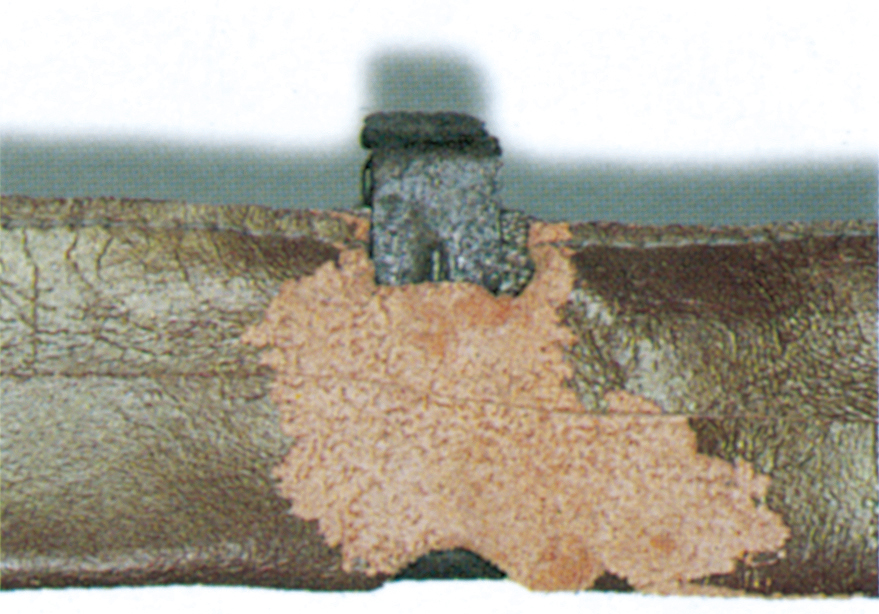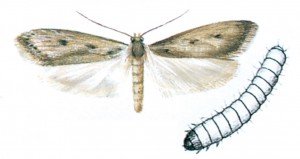Latin: Hofmannophila pseudospretella
This is another moth that is very similar to the clothes moth, but it is larger (up to 1.5 cm long).
Under favourable conditions the female can lay 500-600 eggs and the larvae feed on many different types of material. They are found in stores of cereals and seeds and may attack practically any kind of vegetable matter. They also gnaw woollen goods, often causing severe damage.

The larvae are sometimes found in birds’ nests where they feed on food remains and on the nest material. The adult moths may fly indoors from birds’ nests built under the eaves. The larvae, however, are very sensitive to desiccation, so if the humidity is constantly below 80 %, they cannot complete their development. They will, therefore, only cause damage in damp rooms or cellars.
When conditions become unfavourable the development of the larvae may come to a standstill for a period of time. They then go into a resting phase, which may be the result of low temperature or low humidity, and activity is only resumed when the conditions again become favourable. The pupal stage is spent in a torpedo-shaped, brownish cocoon.





